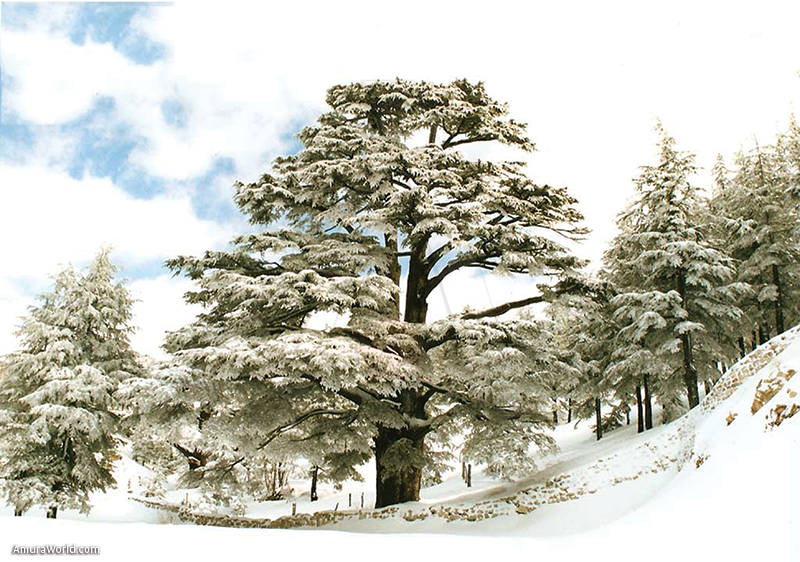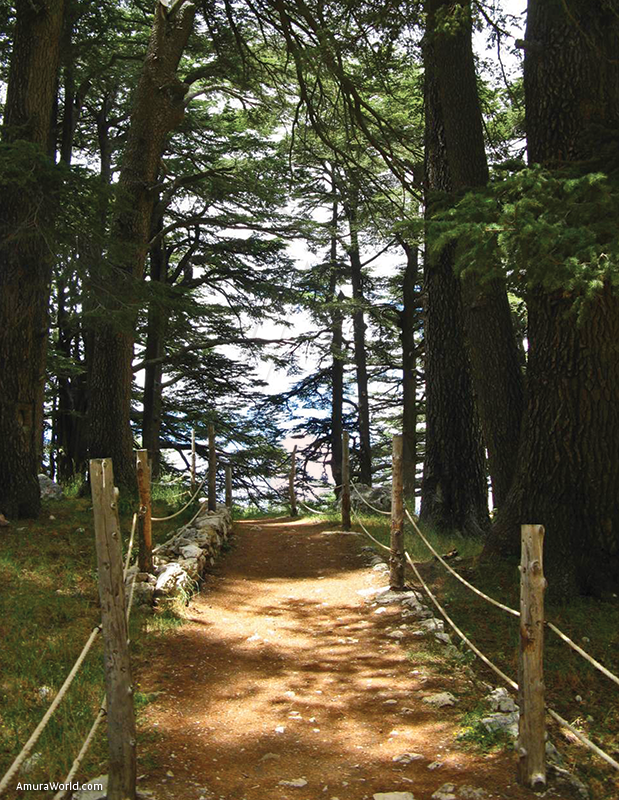Centuries of History
This is indicated by the very name of this tree, which comes from the Middle East. Unfortunately, at present, it has almost disappeared from the Lebanese mountains due to the pressure their forests were subjected there for millennia since their wood is highly prized. However, it’s population has remain extended in southern Anatolia, including several subjects which can still be found in the wild with an estimated age of 2,000 or 3,000 years.
The cedar of Lebanon (Cedrus libani) is the quintessential cedar. The leaves are green and small. It has a thicker and erect trunk, which can reach up to forty meters high. In the adult specimens a demeanor is presented along characteristic horizontal layers, abandoning the conic shape of their youth. It is very much used as an ornamental decoration in gardens.
It is a high mountain tree typical of a country with many mountains as Lebanon. Its habitat is located between 1,200 and 2,000 meters, thus supporting cold winters (temperatures up to 30 º C below zero) and small precipitation. The tree should be planted in full sun and in soils that are capable of draining, all though they are dry, water must have depth.
The cedars are coniferous trees with long branches that extended horizontally, and needle-like leaves, persistent, united in fascicles on short shoots. In the spring cup a pineapple-looking oval can be found with very tight scales of triangular seeds. Male flowers last all summer in the form of two-inch green cones and spread their pollen during late fall.
National Symbol
The slowness of the cedars is proverbial, not only they are slow in growth of the trunk, but have also slowed all cycles. For example, the pollination and fertilization process takes place in a time length of a year and a half, the cones reach maturity between the second and third years.
Despite owning a wood highly prized by the ancient Greeks and Romans, in languages like Greek the term “kedros” is used commercially to designate wood of any tree, this species was unknown in Western Europe for a long time. As proof, the great botanist Carl von Linne systematizer (1707-1778) acknowledges having seen only a single specimen, just the first to be planted in England in 1638 or according to other sources, in 1670 or 1680.
Due to its considerable size, its evergreen foliage and its excellent and incorruptible wood, it appears as a symbol of greatness, nobility and persistence in many ancient communities who used the wood and resin to preserve and cherish it.
In the world of ancient Egypt, people lived with the obsession to escape death by incorruptibility, reason why the cedar wood was used to build coffins, vessels, statues and amulets... At the time of the kingdom of Judah, cedar wood was considered precious, it was highly valued and praised. King David lived in a palace of cedar, whereas the Ark of the Covenant was still in a store. The king said to Nathan the prophet:
“See now, I dwell in a house of cedar, and the ark of God dwells within curtains”. (2 Samuel 7.2)
And this is what Solomon said at the embassy of the Phoenician king Hiram of Tyre (now Lebanon), which was sent to distribute the news that he had been anointed king:
“You already know how David, my father could not build a house for the name of the LORD his God because of the wars that moved around him, until this put them under the soles of your feet. But now Yahweh, God, I was left alone around; any enemy, any adversity. I am, therefore, determined to build a house to the name of the LORD my God, as the LORD said to David my father: “The son of yours, I will put in your place on your throne, that build the temple in my name”. So I order that cedars of Lebanon must be cut”. (1 Kings 5.16 to 20)
The Old Testament stories also notes that Solomon overlaid the twenty cubits of the rear of the temple with cedar boards from floor to the rafters, and devoted to the Blessed inside along with forty cubits before the Blessed were in the Sanctuary. Cedar was all inside the building, with bas-reliefs of gourds and garlands of flowers.
Everything was cedar. Not a single stone could be seen. This is the legendary “Temple of Jerusalem”, built in the tenth century BC , which survives only part of the walls that Herod built nearly a thousand years later, in his reconstruction of the temple. These historical remains are now known as the Wailing Wall. After the completion of the temple, Solomon commanded to build a new palace like a house and seat of government. The cedar wood should be used, the new palace was known as the “Forest of Lebanon”. He later built a palace for Solomon, which took thirteen years to create, until it’s finish. He built the palace of a hundred cubits long, fifty wide and thirty high, supported on four rows of cedar pillar, which relied cedar beams and a cedar roofing as well.
Cedar is appropriate to build dwellings to gods and kings because inside, just like gold, keeps the attributes of nobility, purity and richness. Christ is depicted, in some cases, with a heart of a cedar.
“How beautiful you are, my beloved,
How lovely!
All green our bed!
The beams of our house are cedars
And cypress , the wood paneling”. (Song 1:16-17)
Text: Amura ± Photo: NATIONAL GEOGRAPHIC / KEW WPD / MS / WKM / AYACATA / SAMUEL SNATOS








